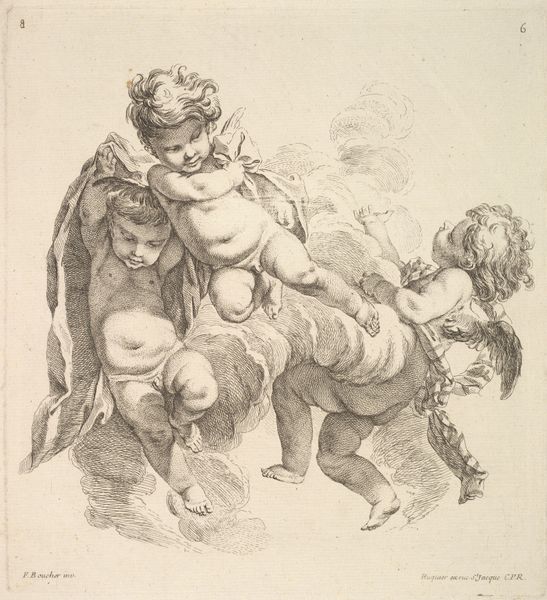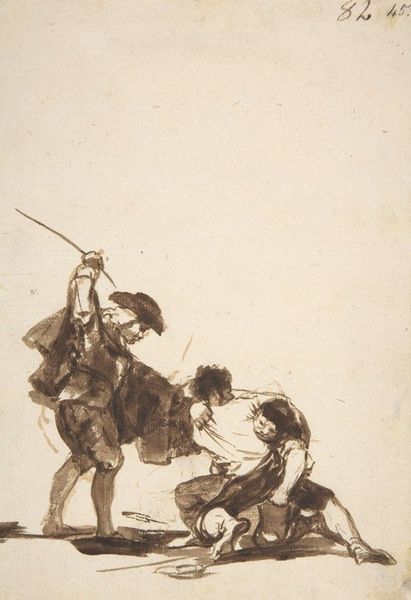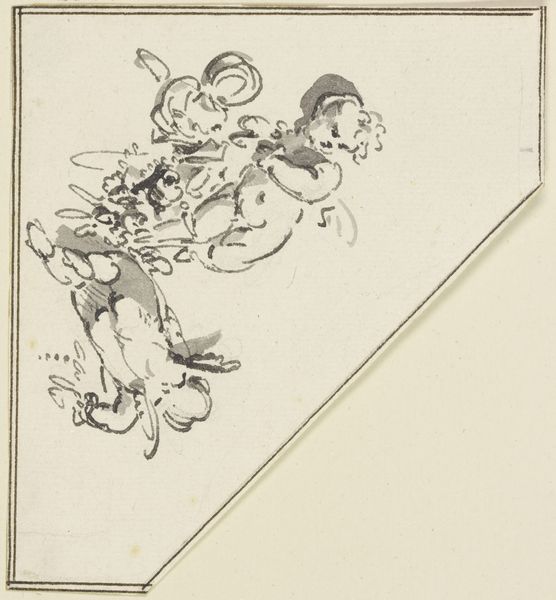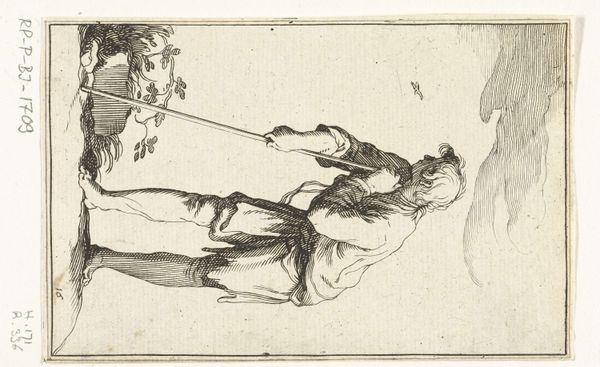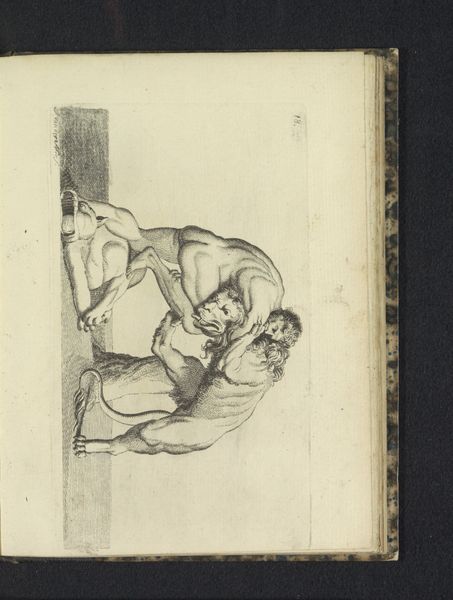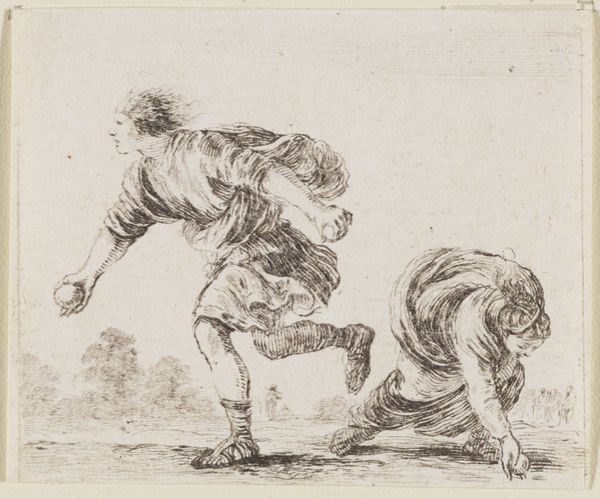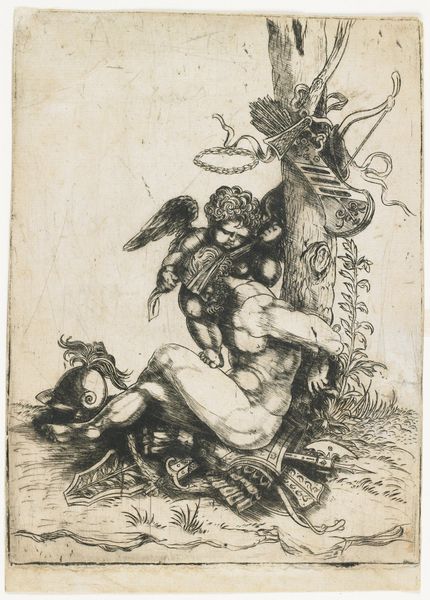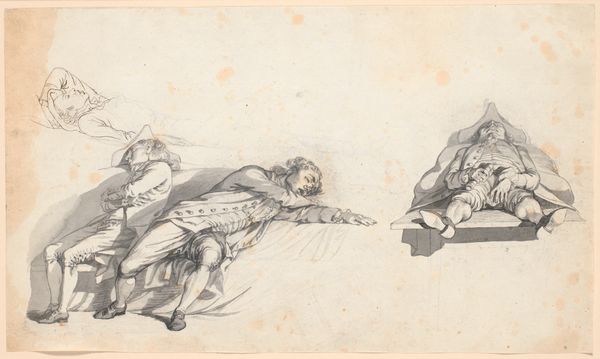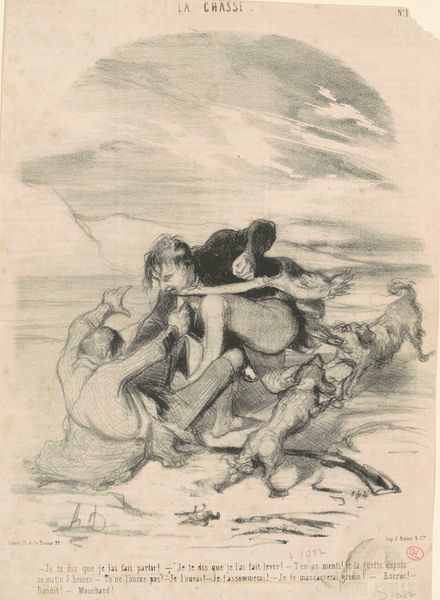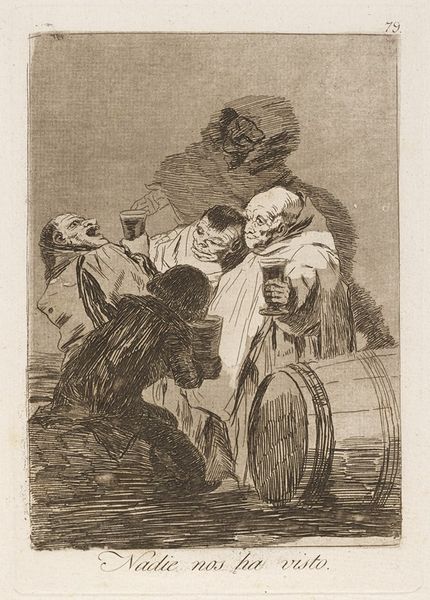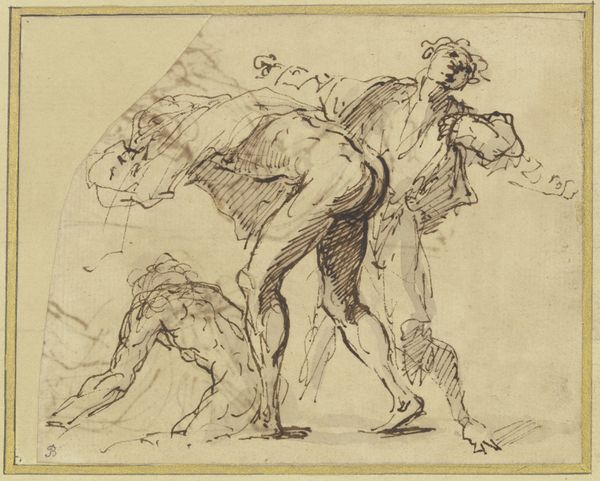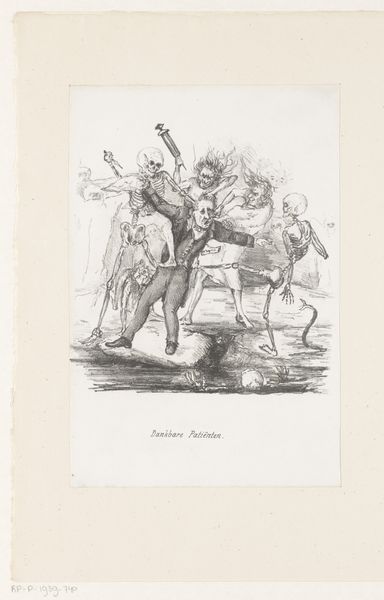
drawing, print, paper, pencil
#
drawing
# print
#
figuration
#
paper
#
romanticism
#
pencil
#
history-painting
Dimensions: 233 × 143 mm
Copyright: Public Domain
Curator: My word, that’s intense. It's just so raw, isn’t it? Gives you a gut punch kind of feeling. Editor: Indeed. We're looking at Francisco de Goya’s "Dream of Flogging," created between 1801 and 1803. It’s a pencil drawing on paper, currently residing here at the Art Institute of Chicago. What symbolic echoes do you hear in it? Curator: Well, the most immediate is the violence, isn't it? That central figure being beaten by all these grotesque… well, they feel almost like demons. It hits me right away with feelings of injustice, cruelty. Like witnessing something deeply wrong. It reminds me, oddly, of nightmares I had as a kid after watching scary movies. Editor: It’s interesting that you mention “demons” because there are art historical contexts that link images of flogging to purgative practices of discipline to release inner “demons”. Flogging represents societal repression and injustice but I also notice its dreamlike quality. Does that come across to you? Curator: Totally. The way the figures kind of float, or swarm, suggests something not quite real, maybe something from the subconscious? Dreams being unreliable, of course, things that can never actually be like what’s on show here. And it being Romanticism…well, there’s bound to be some kind of personal expression going on. Maybe he dreamed this exactly like this. Editor: Goya was deeply affected by the political turmoil in Spain at the time, which certainly fed into his art. We might also view “Dream of Flogging” through a psychoanalytic lens, interpreting the act of flogging as a manifestation of repressed desires, a culturally condemned ritual of power and violence. The inscription at the bottom further pushes that idea, perhaps indicating that the vision is rooted in his subconscious anxieties. Curator: Exactly. Anxiety seems spot on. The composition itself almost has no real sense of depth – it’s like this flurry of dark energy descending, a miasma taking place with no up or down, nothing else around. Like something rising in our hearts! Editor: And consider that drawings like these may be studies or preparatory sketches, so Goya may have used the medium as a tool for sorting through difficult feelings or disturbing images. I also appreciate how it forces viewers to grapple with the more brutal aspects of the human experience. It makes you feel it as an active participant, like a lucid dream gone bad. Curator: Couldn’t have put it better myself! For me, this drawing serves as a chilling reminder that even in our so-called civilized society, these violent undercurrents persist, waiting to surface in our dreams.
Comments
No comments
Be the first to comment and join the conversation on the ultimate creative platform.
